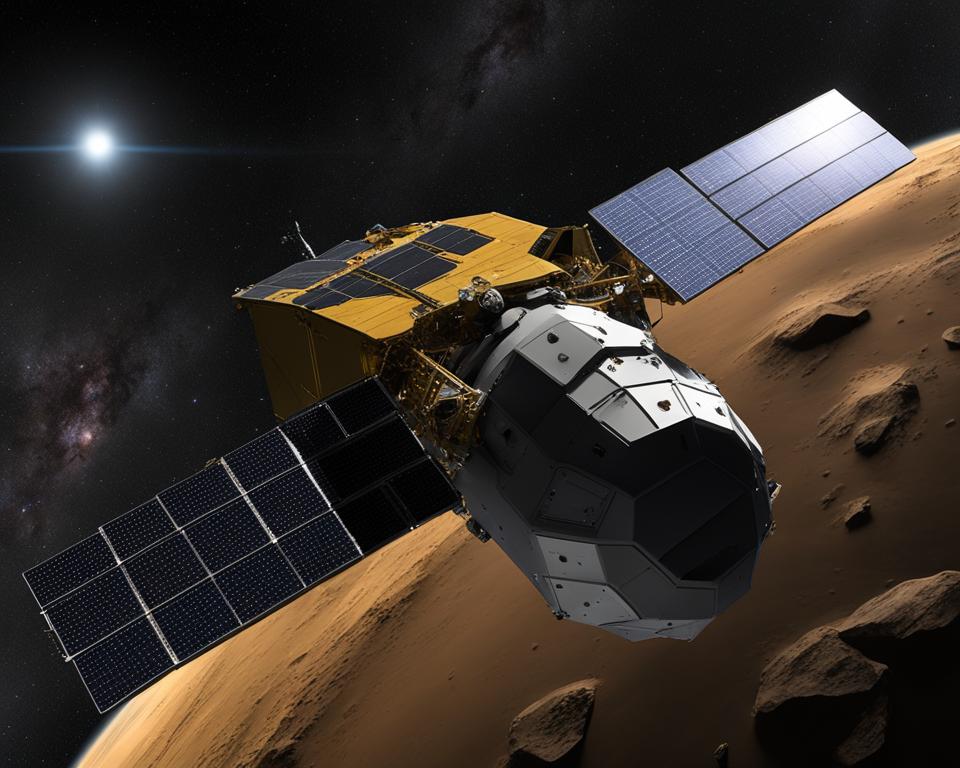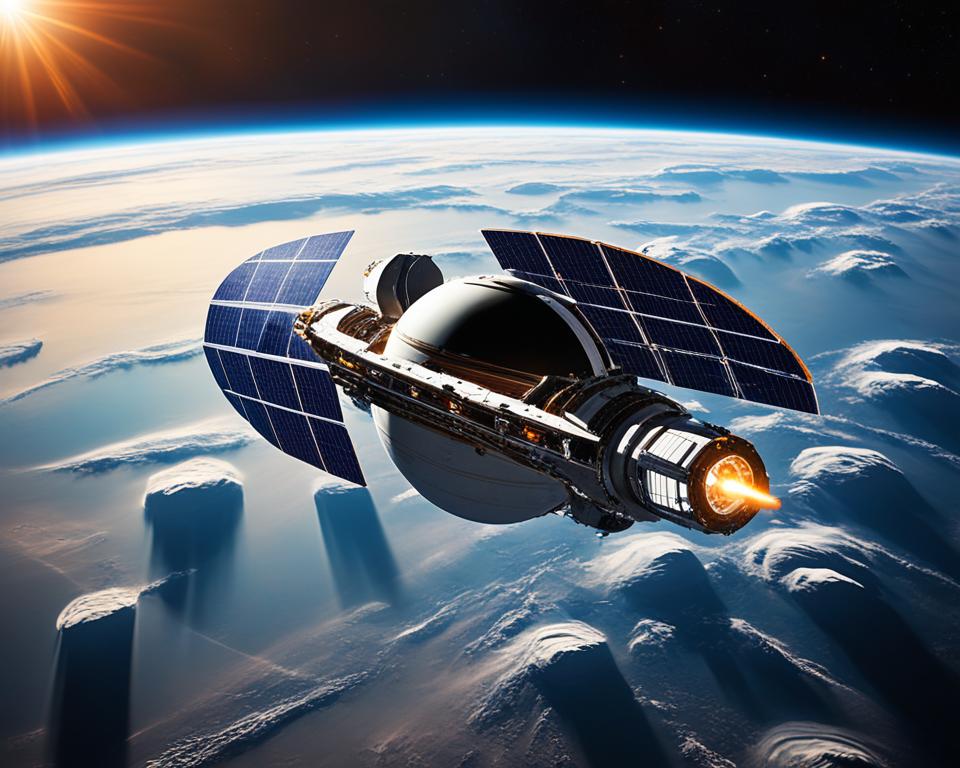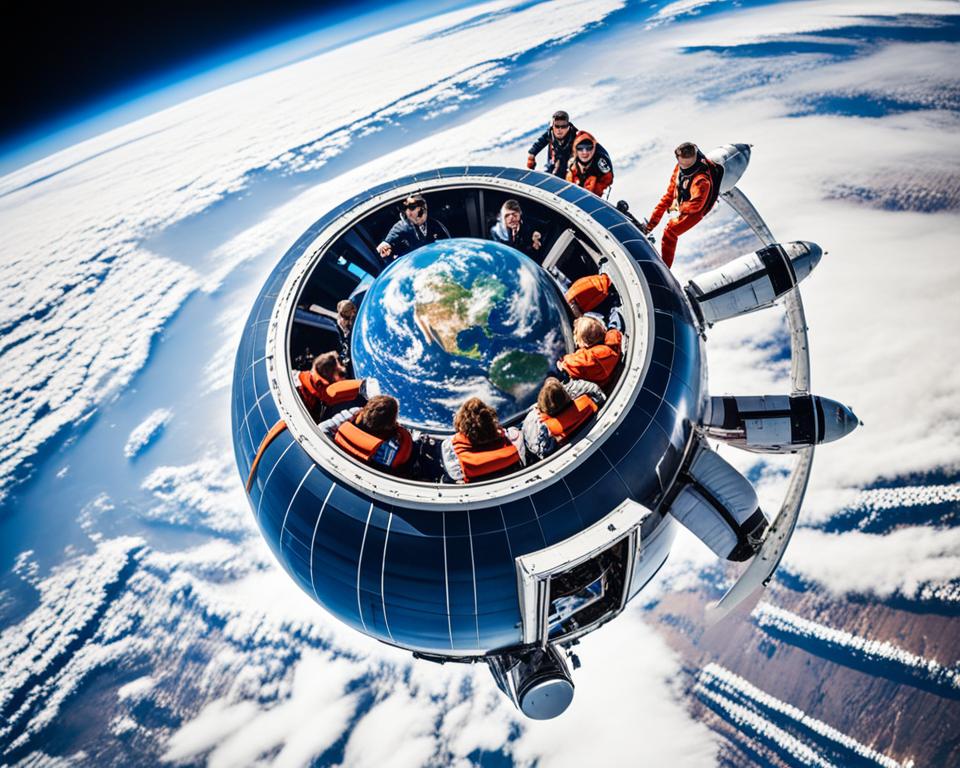Adverts
O aerospace sector is undergoing constant innovations, driven by technological and scientific advances. In Brazil, several companies and institutions are contributing to the development of innovative aerospace technologies, which impact not only the sector, but also society as a whole.
Adverts
In the first text of this series, we highlighted the 10 winning innovations of the aerospace sector in 2021, selected in the Best of What's New Awards. These innovations represent the advancement of aerospace technology and demonstrate the potential of Brazil in this field.
Main points of the text
- O aerospace sector is constantly evolving in Brazil;
- Technological innovations have a direct impact on the sector and society;
- Brazil has internationally recognized projects and companies;
- A aerospace technology shapes the future transportation, exploration and security;
- The advancement of science and technology in Brazil drives research and development in the sector.
USP project on growing food in space
A NASA selected a project from the University of São Paulo (USP) that involves the food cultivation node space as one of the outstanding innovations in the aerospace sector.
Adverts
The project aims to develop techniques for the growing food sustainably in low-gravity environments, such as the International Space Station. This is crucial for future long-duration space missions, such as manned trips to Mars, where food production will be essential for the crew's sustenance.
“Food production in the space is a crucial research area for continued space exploration. The USP project brings a new perspective on how to sustainably grow food in harsh conditions, paving the way for our ability to sustain ourselves during long-duration space missions.”
With the development of these techniques, it is possible to ensure a reliable source of food for astronauts on longer space missions, avoiding dependence on terrestrial supplies. In addition, the food cultivation node space It can also contribute to scientific research on how plants behave in microgravity environments, offering valuable insights for agriculture on Earth.
This USP project represents a significant advance in the field of food cultivation in space and highlights the importance of collaboration between research institutions and space agencies in the search for innovative solutions.
Flyways AI Technology from Airspace Intelligence
The company Airspace Intelligence developed the technology Flyways AI, an intelligent system for flight plans. This innovation helps flight dispatchers define the best routes for aircraft, taking into account factors such as weather and military restrictions.
The use of Flyways AI ensures greater efficiency and safety in air operations, providing fuel savings and reducing CO2 emissions. Alaska Airlines is already using the software with positive results in this regard.
See too:
With this advanced technology, flight dispatchers can optimize flight plans, avoiding routes with bad weather conditions and restrictions that could affect aircraft performance.
O Flyways AI is an essential tool for maximizing the efficiency of air operations, ensuring safer, faster and more sustainable flights.
See below an example of how the Flyways AI can optimize a flight plan:
| Flight Plan Before Flyways AI | Flyways AI Optimized Flight Plan |
|---|---|
| Route diverted due to bad weather | Direct route without detour |
| Longer flight time | Reduced flight time |
| Higher fuel consumption | Fuel economy |
| Higher CO2 emissions | Reduction in CO2 emissions |
O Flyways AI revolutionizes the way flight plans are designed, providing benefits for both airlines and the environment.
SpaceX's Starship reusable spacecraft
A SpaceX, Elon Musk's company, developed the Starship, a reusable spacecraft made of stainless steel. The Starship aims to reach the orbit of the Moon and even Mars, being able to return intact to be used again. Despite facing failures with previous prototypes, the company successfully landed one of the reusable rockets for the first time in May 2021. Currently, SpaceX is working on new prototypes to carry out the first orbital test.
A Starship from the SpaceX is a true innovation in the aerospace sector. Its reusable and resistant design allows the spacecraft to be used in multiple missions, which significantly reduces space costs. In addition, the spacecraft has the capacity to carry large payloads and can even be adapted for manned missions.
A reusable ship SpaceX's Starship represents a significant leap forward in the space industry, paving the way for future of space exploration. With its potential to reach destinations beyond Earth, such as the Moon and Mars, Starship is driving the development of technologies and long-term strategies for space colonization and the search for new horizons in the universe.
Bluetooth headsets take flight with the eX1 from Panasonic Avionics Corp.
The innovation of Panasonic Avionics Corp., O eX1, allows passengers on board the United 737 MAX 8 aircraft to use bluetooth headphones without the need for wires. This provides greater comfort during flights, avoiding discomfort caused by tangled wires. This technology is transforming the passenger experience on board commercial aircraft.
| Benefits of Panasonic Avionics Corp. eX1 |
|---|
| Wireless connectivity |
| Greater comfort during flights |
| Elimination of tangled hair |
| Best in-flight entertainment experience |
Red 6 Military VR Helmet
The company Red 6 developed a virtual reality helmet called ATARS (Airborne Tactical Augmented Reality System) for military pilots. This helmet allows pilots to face virtual opponents during real flights, providing a more realistic experience and eliminating the need to simulate the presence of fictitious aircraft. This innovation also reduces costs and facilitates logistics, eliminating the need to use other aircraft for this training.
O virtual reality helmet ATARS, developed by Red 6, is a revolution in military pilot training. With this innovative technology, pilots can face virtual opponents during real flights, making training more realistic and immersive.
ATARS eliminates the need for simulated aircraft during training, which reduces costs and facilitates logistics. Pilots can train in their own aircraft, honing their combat skills in a virtual environment without compromising real operations.
Additionally, the ATARS helmet offers an immersive experience, with advanced graphics and a wide range of combat scenarios. Pilots can practice flight tactics, evasive maneuvers and attack strategies in a highly realistic and safe virtual environment.
A Red 6 worked closely with military pilots and virtual reality experts to develop this state-of-the-art helmet. ATARS provides effective training for pilots, allowing them to hone their combat skills and be prepared for real-world situations.
With Red 6’s ATARS, military pilots have access to high-quality training that combines the real world with virtual reality. This innovation is revolutionizing pilot training and helping to prepare military forces for future challenges.
NASA's Near Earth Asteroid Scout Mission
A NASA launched the mission Near Earth Asteroid Scout (NEA), which consists of a device powered by solar energy the size of a shoebox. This tool aims to identify asteroids near Earth and has a solar sail that captures the sun's rays to move. This mission is an example of innovation in the field of solar energy in space and has a relatively low cost compared to other space missions.

O Near Earth Asteroid Scout (Near-Earth Asteroid Scout, in free translation) is a mission of the NASA that uses solar energy to study asteroids close to our planet. With the aim of further advancing our knowledge of these celestial bodies and improving our detection and monitoring techniques, Scout uses a combination of solar power and propulsion navigation to approach these objects and provide valuable information about their composition, size and trajectory.
One of the NEA Scout’s key features is its solar sail, which allows the spacecraft to capture the sun’s energy and use it to power its orbit around Earth. This solar propulsion technology is an innovative and more cost-effective alternative to conventional propulsion systems, which rely on chemical fuel.
Main features of NEA Scout:
- Compact size, similar to a shoebox
- Solar sail for propulsion
- Use of solar energy for power supply
- Scientific equipment for collecting data on asteroids
- International cooperation between NASA and space agencies of other countries
The main purpose of NEA Scout is to explore and study near-Earth asteroids, also known as Near Earth Objects (NEOs). These asteroids represent potential threats and also opportunities for future space expeditions. With NEA Scout’s technology, we can obtain crucial information about these celestial objects and develop planetary defense strategies to protect our planet from potential asteroid impacts.
“The NEA Scout mission is a significant milestone for space exploration and asteroid research. With its compact size and innovative use of solar power, it demonstrates our continued commitment to pursuing technological and scientific advancements to better understand the universe around us.” – NASA Engineer
| NEA Scout Mission Benefits | Challenges and Solutions |
|---|---|
| – Advances in understanding near-Earth asteroids | – Minimizing costs through the use of solar energy as a propulsion source |
| – Monitoring and detection of potential asteroid threats | – Development of solar sail technology for space propulsion |
| – Contribution to future space exploration | – International cooperation to share knowledge and resources |
Conclusion
The aerospace sector is a field of constant technological innovation, driven by the limits of science and technology. Innovations in aerospace technology bring benefits not only to the industry, but also to society as a whole. From the development of new, more efficient and sustainable engines, to the creation of advanced materials and the advancement of navigation and avionics technologies, these innovations shape the future transportation, exploration and security.
Additionally, space tourism is becoming a reality with companies like SpaceX, Blue Origin and Virgin Galactic further driving the growth of aerospace sector. The ability to take people beyond the limits of the Earth opens up new possibilities and inspires a sense of wonder and discovery. The aerospace technology is an engine for progress and advancement of society, as well as promoting technological innovation in other sectors.
With increasingly optimistic forecasts for the future from the aerospace technology, it is exciting to think of the many opportunities that await the industry. As we explore space, unlock secrets of the universe and reach new horizons, aerospace engineering plays a vital role in the search for innovations that will shape our future. In Brazil, there is significant potential for growth in the aerospace sector, with research institutions and companies working together to drive aerospace technology national.
FAQ
What are the innovations in aerospace technology highlighted in Brazil?
To the innovations in aerospace technology in Brazil include the use of artificial intelligence to optimize flight routes, reusable ship from SpaceX, the virtual reality helmet for military and solar energy in space with the device Near Earth Asteroid Scout from NASA.
What is the objective of the USP project on growing food in space?
The USP project aims to develop techniques for growing food sustainably in reduced gravity environments, such as the International Space Station.
What is Airspace Intelligence's Flyways AI technology?
The technology Flyways AI is an intelligent flight planning system that helps flight dispatchers define the best routes for aircraft, taking into account factors such as weather and military restrictions.
What is the purpose of SpaceX's reusable Starship?
SpaceX's Starship aims to reach the orbit of the Moon and even Mars, being able to return intact to be used again.
What is the Panasonic Avionics Corp. eX1?
O eX1 is an innovation of Panasonic Avionics Corp. that allows passengers on board the United 737 MAX 8 aircraft to use bluetooth headphones without the need for wires.
What is the Red 6 virtual reality headset?
Red 6's virtual reality helmet, called ATARS (Airborne Tactical Augmented Reality System), allows military pilots to face virtual opponents during real flights, providing a more realistic experience.
What is NASA's Near Earth Asteroid Scout mission?
NASA's Near Earth Asteroid Scout (NEA) mission consists of a solar-powered device that has a solar sail to move around and aims to identify near-Earth asteroids.
Why are innovations in aerospace technology important?
To the innovations in aerospace technology are important because they shape the future of transportation, exploration and safety, bringing benefits not only to the sector but also to society as a whole.
Source Links
https://gizmodo.uol.com.br/as-10-principais-inovacoes-do-setor-aeroespacial-em-2021/




